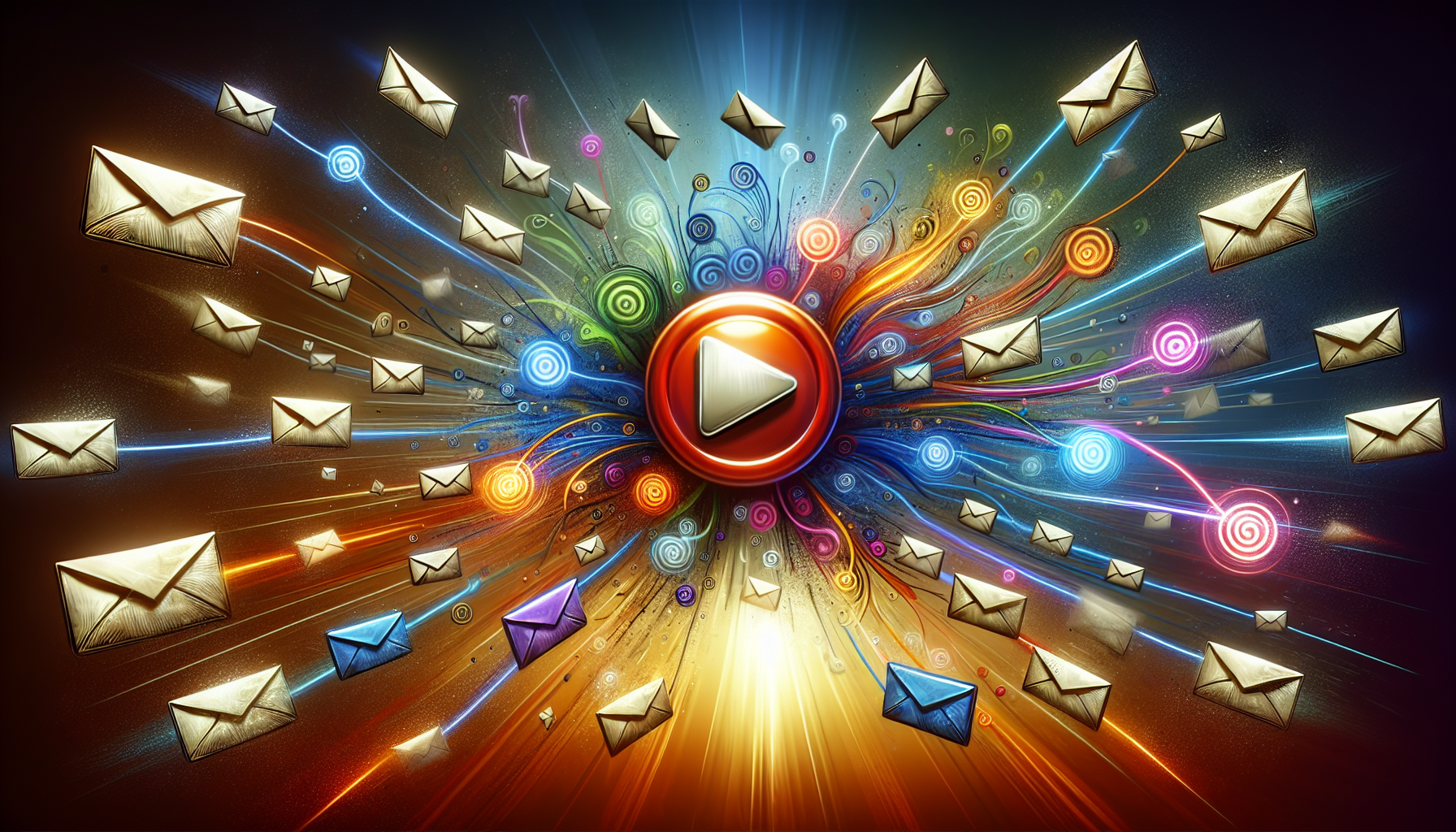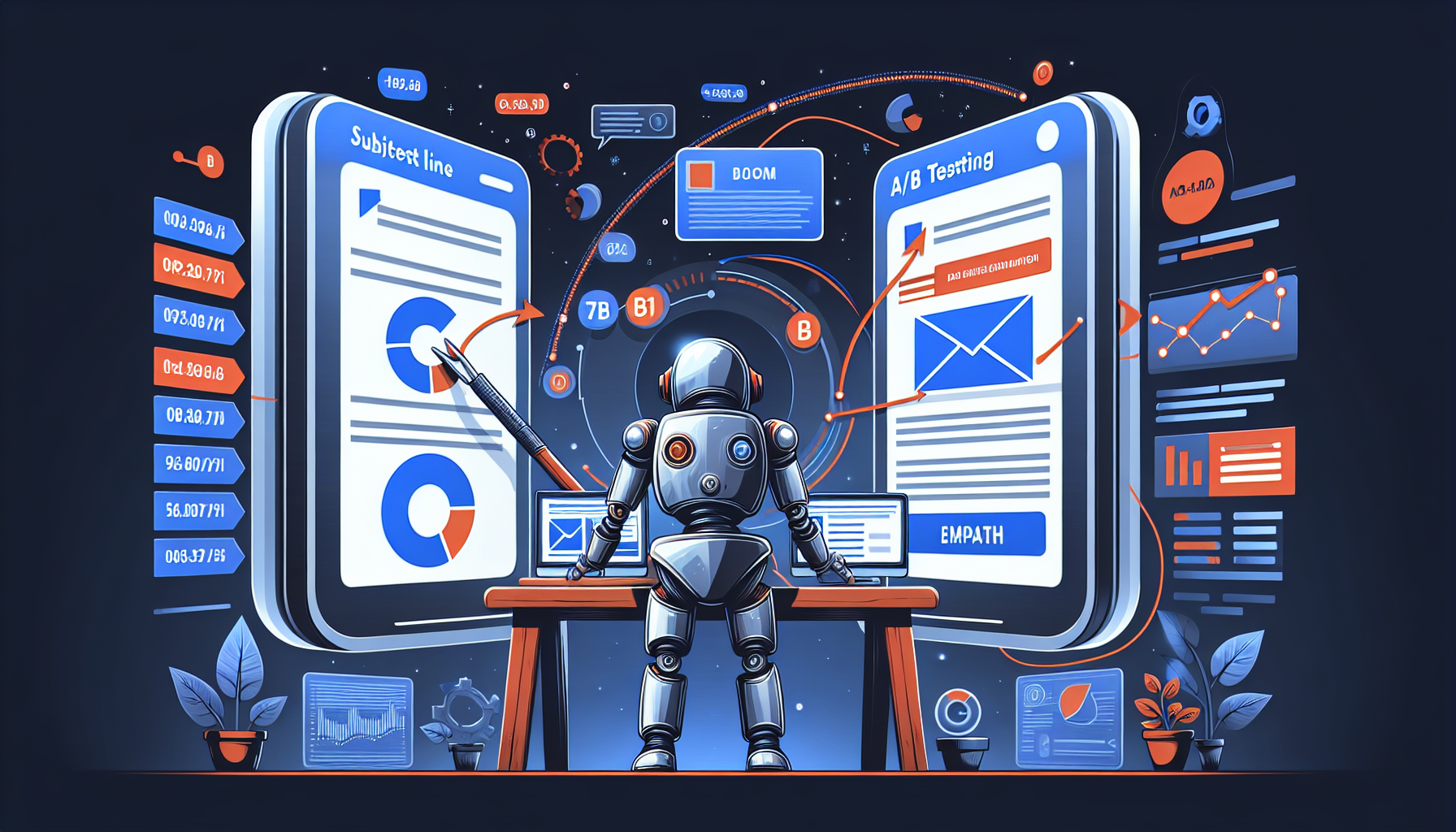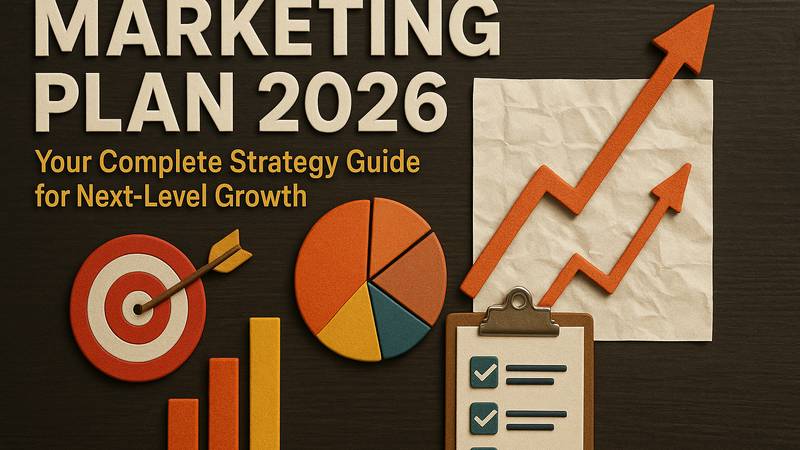
Email Marketing Tricks Everyone Should Know
Need email inspiration that drives results? Our no-nonsense guide of ‘100 email marketing prompts everyone should know’ delivers just that. From compelling subject lines to irresistible calls to action—every prompt is a click away from upping your email game. Start implementing these straightforward prompts today and turn every send into a potential win for your campaign.
Key Takeaways
-
Effective email marketing hinges on crafting enticing subject lines, engaging content, and clear calls to action, which can be enhanced using tools like ChatGPT for prompt generation and personalization tactics.
-
Segment-specific strategies and re-engagement tactics such as personalized milestone emails and humor can significantly increase engagement and conversion rates, while maintaining list hygiene boosts deliverability.
-
Integrating email marketing with analytics, A/B testing, and automation tools, as well as staying compliant with laws such as CAN-SPAM, CASL, and GDPR, are essential for optimizing campaign performance and legality.
Unlocking the Power of Email Marketing Prompts

Emails are the digital letters that connect businesses to customers, providing a platform for communication that is personal, direct, and effective. But how do you craft an email that is opened, read, and clicked? The secret lies in email marketing prompts. These prompts aid in crafting compelling subject lines and engaging content, which are essential for achieving desired outcomes in email marketing campaigns.
Today, marketers are leveraging ChatGPT to craft promotional emails in seconds with simple email prompts, delivering tailored strategies, implementation, and tracking for better email marketing results. Want to know the best part? The use of ChatGPT has been recommended for creating not just subject lines and content, but also actionable tips and suggestions for maintaining email deliverability, leading to a 15-25% increase in marketing results.
Ready to unlock the power of email marketing prompts? Let’s dive deeper!
Crafting Winning Subject Lines
Subject lines are your first point of contact with your audience. They are the gatekeepers to your email content and play a crucial role in whether your email is opened or trashed. A whopping 64% of email recipients decide to open an email based solely on the subject line. That’s right – your subject line could be the determining factor between an opened email and a missed opportunity.
How do you craft a winning subject line that grabs attention? Here are some tips:
-
Keep it short and sweet. Subject lines with 20 characters or fewer lead to an average open rate of 29.9%.
-
Use unique or striking words to help your subject line stand out.
-
Start your subject lines with action verbs to motivate your readers to engage with the email content.
But remember, while it’s important to be creative and engaging, it’s equally crucial to stay true to your brand. The style and tone of your subject line should be consistent with your brand’s character. A mismatch may confuse your readers, potentially leading to lower open rates. So, keep it creative, keep it short, and most importantly, keep it real!
Engaging Content Creation
Once you’ve mastered the art of crafting winning subject lines, the next step is to focus on your email content. After all, engaging content is what keeps your audience hooked and encourages them to take the desired action. But how do you create content that resonates with your audience? The first step is to understand your audience’s interests, pain points, and preferences. This helps you create content that speaks directly to them, addressing their needs and offering solutions.
Planning is another crucial aspect of content creation. Using a content calendar helps in planning timely and relevant content that keeps the audience engaged. But remember, variety is the spice of life. Incorporate a variety of formats such as stories, infographics, and videos to cater to different audience preferences. Educational content that provides value, such as tutorials and webinars, can keep your subscribers engaged. Don’t shy away from interactive content like quizzes or polls that encourage audience participation. Also, consider including user-generated content, such as customer stories or testimonials, to increase engagement by showcasing real-life experiences.
Lastly, remember to keep your content relevant and timely. Seasonal topics or current events can make your content feel more relevant and timely, increasing its appeal to your audience. The key takeaway here? Engaging content is created by understanding the audience, planning with a content calendar, and using a mix of content types and topics that resonate. So, let’s get creative and start crafting engaging content!
Calls to Action That Convert
A call to action (CTA) is the pivotal point in your email where you ask your audience to take a desired action. It could be anything from ‘Sign Up Now’ to ‘Buy Now’ to ‘Read More’. The role of a CTA can’t be stressed enough – it’s the bridge that leads your audience from the email to your website or product. But crafting a compelling call to action is an art in itself.
A good call to action should be clear and concise. By explicitly stating the required action in the subject line, such as including ‘RSVP now’ or ‘Register today,’ you increase your chances of engagement and recipients taking that action. To add a sense of urgency, consider using subject lines like ‘Last Chance to Register!’ or ‘Secure Your Spot Now!’. These phrases prompt quicker action from recipients.
Remember, your call to action is a crucial element in your email marketing strategy. It gives your recipients a clear indication of the steps they are expected to take next. So, take the time to craft a compelling call to action. Test different CTAs, analyze your results, and refine your strategy. After all, a call to action that converts is a call to success!
Mastering Personalization in Email Campaigns

In email marketing, one size does not fit all. In a world where personalization is key, email campaigns need to be tailored to the individual needs and preferences of your subscribers. And the power of personalization is undeniable. It can significantly improve metrics across open and click-through rates, conversion rates, and even revenue by leveraging insights such as purchase history and browsing habits.
Ready to take your email campaigns to the next level? Let’s dive into the world of personalization!
Segment-Specific Email Strategies
Segmentation is a powerful tool in email marketing. By dividing your audience into specific groups based on their unique interests or behaviors, you can tailor your campaigns to these key marketing segments, leading to higher engagement rates. But how do you effectively segment your email list?
An effective email marketing campaign often results from list segmentation based on variables such as location, purchase history, or website actions, leading to more personalized communication. You can also segment customers according to common characteristics like their stage in the sales funnel, enabling the creation of content that aligns with their interests.
Remember, segmenting your email lists to send relevant campaigns to different clusters of audiences can result in more opens and engagement while reducing the risk of being marked as spam. So, invest in segment-specific email strategies. It’s time to give your audience what they really want!
Re-engagement Tactics for Inactive Subscribers
In every email list, there are bound to be inactive subscribers – those who don’t open your emails or engage with your content. But don’t be disheartened. These inactive subscribers offer an opportunity for re-engagement and improved customer retention. But how do you re-engage these inactive subscribers?
One effective tactic is incorporating humor professionally in emails. A touch of humor can be just the thing to re-engage prospects who are not responding. Besides, who doesn’t enjoy a good laugh?
Another crucial aspect of re-engagement is the regular maintenance of your email list. This includes managing inactive subscribers, which helps maintain a positive sender reputation and high deliverability rates.
Remember, every subscriber on your list was once interested in your product or service. So, don’t give up on them. With the right re-engagement tactics, you can rekindle that interest and turn inactive subscribers into active customers once again!
Celebrating Milestones and Anniversaries
Celebrating customer milestones and anniversaries is more than just a nice gesture. It’s an effective strategy to foster loyalty and engagement. But how do you celebrate these milestones in your email marketing?
Using personalized emails to recognize customer milestones can significantly enhance engagement. For example, you could send an email to celebrate a year since a customer first signed up or made their first purchase. These emails not only make the customer feel valued but also foster a sense of belonging.
You could even go a step further by creating segments for loyal customers and distributing celebratory offers and exclusive deals. This not only acknowledges important customer milestones but also deepens loyalty. So, start celebrating your customer milestones. It’s a win-win situation!
Optimizing Email Deliverability

Email deliverability is a critical factor in the success of your email marketing efforts. After all, what good is an email if it doesn’t reach your subscriber’s inbox? From authenticating your email domain to managing IP allocation and regularly cleaning your email list, there’s a lot you can do to ensure your emails land in the right place.
Ready to optimize your email deliverability? Let’s dive in!
Avoiding Spam Filters
Spam filters are the gatekeepers of the inbox. They’re designed to protect users from unwanted or harmful emails. But sometimes, even legitimate marketing emails can get flagged as spam. So, how do you avoid spam filters and ensure your emails reach your audience?
One effective strategy is to limit the use of punctuation in your subject lines. Keeping your punctuation to three marks can prevent your email from appearing spam-like. Another important aspect is the content of your subject lines. Crafting email subject lines that avoid common spam phrases can prevent your emails from being flagged as spam.
Remember, your sender reputation plays a vital role in avoiding the spam folder. Sending campaigns from a business domain, rather than a generic email service domain, reinforces legitimacy and can improve inbox placement. So, take the time to craft your emails carefully, and you’ll be on your way to avoiding spam filters and improving your email deliverability!
Mobile Optimization Techniques
As more and more people access their emails on their mobile devices, mobile optimization has become a crucial aspect of email marketing. But how do you optimize your emails for mobile devices?
The key to effective mobile optimization lies in your email design. Here are some tips to consider:
-
Clear and visible CTAs are crucial in mobile-optimized email designs to motivate subscribers to take action without distractions.
-
Your emails should be easy to read, with a clear and concise message.
-
Ensure that any links in your email are easy to click on a mobile device.
Remember, mobile optimization is more than just making your emails look good on a mobile device. It’s about creating a seamless experience for your audience, no matter where they are or what device they’re using. So, optimize your emails for mobile, and watch your engagement soar!
A/B Testing Your Email Marketing Efforts

A/B testing is a powerful technique that can significantly improve your email marketing efforts. By deciding to use a b testing, you can send two variations of an email to separate sample groups and analyze metrics like open and click rates to determine the more effective version.
Ready to take your email marketing to the next level with A/B testing? Let’s get started!
Crafting Variations for Subject Lines
Your subject line is the first thing your audience sees. It’s your first chance to make an impression and draw your audience in. But how do you know which subject line will perform best? This is where A/B testing comes in.
An email subject line generator that leverages AI and machine learning can:
-
Create subject lines that resonate with your target audience and voice
-
Test a variety of subject lines to determine which ones yield the highest open rates
-
Refine your email marketing strategy based on the results
-
Optimize the word length of your email subject lines, as research indicates that shorter subject lines often lead to better open rates.
Remember, A/B testing is an ongoing process. It’s not about finding the ‘perfect’ subject line, but about continually testing and refining your strategy to maximize your results. So, start crafting variations for your subject lines, test them out, and let the data guide your strategy!
Testing Different Calls to Action
Your call to action is a crucial component of your email. It’s the part of your email where you ask your audience to take the desired action. But how do you know which call to action will yield the best results? The answer lies in A/B testing.
By testing different calls to action, you can determine which ones lead to more clicks and conversions. Experimenting with different elements like text, positioning, or visual cues can influence the click-through rate and conversions. This allows you to optimize your calls to action based on what works best for your audience.
Remember, your call to action is crucial in guiding your audience towards the desired action. So, take the time to test different calls to action and refine your strategy based on your results. You might be surprised at the impact a well-crafted call to action can have on your email marketing success!
Leveraging Automation and Analytics Tools

Email marketing is an ongoing process. It requires constant monitoring, analysis, and adjustment to ensure the best results. But with the right tools, you can streamline this process and gain valuable insights into your campaigns.
By implementing tools like ChatGPT for email marketing tasks, you can free up time, allowing you to concentrate on strategy and other high-level marketing priorities, such as utilizing a digital asset management tool. Ready to leverage automation and analytics tools in your email marketing efforts? Let’s dive in!
Setting Up Email Automation Workflows
Email automation is a powerful tool that can help you scale your email marketing efforts. By automating your emails, you can ensure consistent communication with your audience, saving you time and effort. But how do you set up email automation workflows?
Email automation can effectively scale personalized campaigns by using triggers based on specific customer actions, such as signing up or abandoning a cart. By understanding the customer journey, email automation can be applied to key touchpoints, guiding prospects through their path to purchase and boosting engagement.
Remember, setting up email automation workflows is not a one-time task. It requires regular monitoring and adjustment to ensure optimal performance. So, set up your email automation workflows, monitor your results, and refine your strategy as needed. With the right email automation workflow, you can take your email marketing to new heights!
Interpreting Key Metrics with Analytics
Analytics play a crucial role in email marketing. They provide valuable insights into your campaign performance, helping you identify what’s working and what needs improvement. But how do you interpret these key metrics?
Key metrics such as:
-
clickthrough rate
-
conversion rate
-
bounce rate
-
list growth rate
-
unsubscribe rate
all play a pivotal role in influencing the success of email marketing campaigns. Each of these metrics provides a different perspective on your email marketing performance. For example, clickthrough rate reflects the level of engagement by showing the percentage of subscribers who clicked on links within an email, highlighting which content captures interest.
Conversion rate goes a step further, indicating the percentage of recipients taking the desired action after clicking, directly linking email efforts to business outcomes. Remember, interpreting key metrics is not just about looking at the numbers. It’s about understanding what these numbers mean for your business and using these insights to refine your email marketing strategy.
So, start tracking your key metrics, interpret the data, and let the insights guide your strategy!
Integrating Email with Other Marketing Channels
In today’s digital world, digital marketing is not confined to a single channel. It’s about creating a cohesive marketing strategy that leverages the strengths of various channels. And email marketing plays a crucial role in this integrated approach. By integrating email marketing with social media, you can amplify engagement and grow your audience.
Ready to integrate your email marketing with other channels? Let’s get started!
Cross-Promotion with Social Media Posts
Social media is a powerful marketing tool. It offers a platform to reach a wider audience, engage with them, and build lasting relationships. But how do you leverage social media in your email marketing?
One effective strategy is to promote your branded newsletters directly on your social media platforms. By doing so, you can increase your newsletter subscribers by reaching a targeted audience or by sponsoring newsletters from online publishers within the same industry.
Another strategy is to align your email campaigns with your social media efforts, incorporating marketing and sales tactics. For example, you could promote an event on social media and distribute related content via email.
Remember, integrating your email campaigns with your social media efforts is not just about cross-promotion. It’s about creating a cohesive marketing message across platforms. So, start cross-promoting your email campaigns with your social media posts, and watch your engagement soar!
Enhancing Customer Journey Mapping
Customer journey mapping is a crucial aspect of marketing. It provides a visual representation of a customer’s interactions with your brand, helping you understand their needs, pain points, and preferences. But how do you enhance customer journey mapping with email marketing? Utilizing a customer journey mapping tool can greatly improve this process.
Effective customer journey mapping utilizes reliable data and audience research. By integrating email marketing into your customer journey map, you can guide your customers through their path to purchase, moving them towards the desired action at each step.
Remember, enhancing your customer journey mapping is not a one-time task. It requires regular updates based on customer feedback and changes in customer behavior. So, start integrating email marketing into your customer journey mapping, and gain valuable insights into your customers’ experiences!
Creative Ways to Generate Leads and Sales
Email marketing is not just about sending emails; it’s about generating leads and driving sales. But with the plethora of emails flooding your audience’s inbox, how do you stand out and grab their attention? This is where creativity comes into play. From optimizing your social media profiles to hosting live events, there are numerous creative strategies to generate leads and grow your email list.
Ready to get creative? Let’s dive in!
Showcasing Customer Testimonials and Reviews
Customer testimonials and reviews play a crucial role in building trust and credibility. They offer a glimpse into the experiences of real customers, making your brand more relatable and trustworthy. But how do you showcase these testimonials and reviews in your emails?
Incorporating customer testimonials and reviews into your sales emails can be an effective strategy. You could include:
-
Succinct product reviews
-
Social media posts or images
-
Video testimonials
-
Customer success stories
By incorporating authentic, relatable content, you can create a sense of connection, which will enrich your emails.
Remember, your customer testimonials and reviews should align with the objectives of your email. They should contribute to your conversion goals, convincing your audience to take the desired action. So, start showcasing your customer testimonials and reviews, and watch your credibility soar!
Announcing Upcoming Events and Offers
Announcing upcoming events and offers is a great way to drive excitement and participation. It gives your audience something to look forward to, keeping them engaged and interested in your brand. But how do you announce these events and offers in your emails?
Personalizing your email announcements can create a deeper connection with your subscribers. For example, you could send an email to announce an exclusive offer for a customer’s birthday or anniversary. These personalized emails not only make the customer feel valued but also enhance excitement and participation in the upcoming event or offer.
Remember, every interaction with your customer is an opportunity to deepen your relationship with them. So, make the most of these opportunities by announcing upcoming events and offers. It’s a great way to keep your audience engaged and excited about your brand!
Staying Compliant with Email Marketing Laws
In the world of email marketing, compliance is key. Adhering to email marketing laws not only protects your business but also helps maintain trust with your audience. These laws cover various aspects, from obtaining explicit consent for sending emails to protecting user data.
In the US, the CAN-SPAM Act sets out requirements for commercial emails, prohibiting false information, requiring advertisement disclosure, and providing a clear opt-out mechanism. In Canada, the Canadian Anti-Spam Legislation (CASL) requires obtaining either explicit or implied consent before sending commercial electronic messages and mandates that these messages contain easy unsubscribe options.
In the European Union, the General Data Protection Regulation (GDPR) requires businesses to obtain explicit and informed consent prior to processing customer data, with rights for individuals to access, rectify, and erase their personal data. Even if your business is not based in the EU, the GDPR extends globally to any business handling the data of EU residents, calling for clear consent procedures and data rights mechanisms.
Remember, staying compliant with email marketing laws is not just about avoiding penalties. It’s about building trust with your audience and maintaining a positive reputation. So, make sure you understand the laws in your jurisdiction, and ensure your email marketing strategies are compliant.
Summary
In summary, email marketing is a powerful tool that can transform your digital marketing efforts. From crafting compelling subject lines and engaging content to personalizing emails and optimizing deliverability, there are numerous strategies that you can leverage to maximize your email marketing efforts.
But remember, the key to successful email marketing lies in constant testing and refinement. Whether it’s A/B testing your subject lines, interpreting key metrics, or staying compliant with email marketing laws, there’s always room for improvement. So, keep testing, keep refining, and keep pushing the boundaries of what’s possible with email marketing. The sky’s the limit!
Frequently Asked Questions
How do I craft compelling subject lines?
Craft compelling subject lines by keeping them short, using unique words, starting with action verbs, and maintaining a consistent brand tone. This will attract the reader’s attention and improve open rates.
How can I personalize my email campaigns?
Personalize your email campaigns by leveraging customer data to individualize email content, segmenting your email list based on unique interests or behaviors, and celebrating customer milestones and anniversaries. This can help increase engagement and build stronger connections with your audience.
What is A/B testing and how do I use it in email marketing?
In email marketing, A/B testing allows you to send two different variations of an email to sample groups and analyze metrics like open and click rates to determine the more effective version. You can use it to test variations for subject lines and calls to action.
How can I integrate email marketing with other marketing channels?
Integrate email marketing with other channels by cross-promoting email campaigns with social media posts and enhancing customer journey mapping. This will help create a cohesive and effective marketing strategy.
What are some creative ways to generate leads and sales?
Optimize your social media profiles, host live events, showcase customer testimonials and reviews, and announce upcoming events and offers to generate leads and sales effectively. Try implementing these creative strategies to boost your business.
Are you interested in finding out more? Browse the rest of our blog for other marketing tips. If you’re ready to create your first email, survey, sign-up form, or landing page then register for a free trial to get the tools you need to build powerful marketing campaigns!
© 2024, Vertical Response. All rights reserved.



